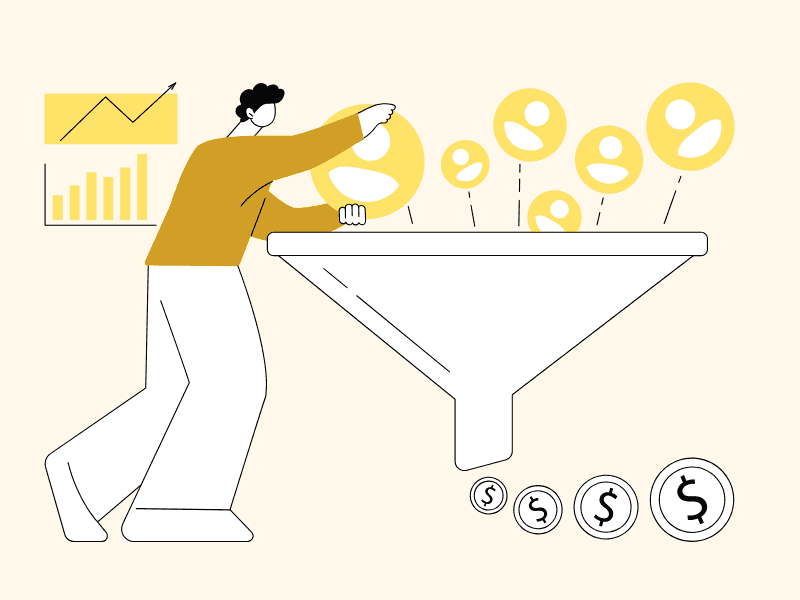You don’t need “a website.” You need a sales-ready product page for you. That’s the mindset shift that makes Copyfolio shine. Below is a thematic, conversion-first playbook: positioning, proof, and path to action—mapped block-by-block to Copyfolio so you can ship a portfolio that sells.
1) Positioning: Say What You Sell (Not What You Do)
Goal: In 5 seconds, a visitor should know your audience, outcome, and edge.
Formula (headline):
I help [who] achieve [business outcome] with [method/edge].
Examples:
“I help DTC brands lift checkout conversions 20–40% with research-led UX sprints.”
“I turn underperforming content into revenue pages using SEO + UX experiments.”
Copyfolio mapping:
Hero block: One crisp H1 + a single CTA (“Book a call” / “Request proposal”).
Social proof strip: Logos or short one-liners (keep it scannable).
2) Proof: Your Case Studies Are Mini Sales Pages
Treat each case study like a landing page: pain → process → payoff → proof → next step.
Narrative scaffold (copy-paste template):
Context (pain): Who was struggling with what? Why did it matter commercially?
Constraints (reality): Time, budget, tech debt. (This builds credibility.)
Approach (process): Your method in 3–5 steps, each tied to a hypothesis.
Highlights (solution): Before/after frames with one sentence of why this worked.
Impact (payoff): KPI deltas or qualitative wins tied to business outcomes.
What’s next: A thoughtful roadmap (shows maturity).
CTA: “Want a similar outcome? Get a free teardown.”
Copyfolio mapping: use alternating Text + Image blocks. Keep paragraphs 2–4 lines max. Name images descriptively (also good for SEO).
3) Path: Engineer the Conversion Journey
Most portfolios fail here. You need clear pathways from any page to a next step.
Primary CTA: one verb everywhere (“Request teardown” or “Book a call”).
Secondary CTA: lower-commitment (“See pricing”, “Download checklist”).
Contact page: 3 fields max (name, email, context). Add 3 radio prompts to qualify leads.
Navigation: Home · Case Studies · Services · About · Contact. No dropdown chaos.
Footer: Email, LinkedIn, location (credibility), quick CTA.
4) Services Page: Productize Your Work
Package outcomes, not hours.
Offer trio (good/better/best):
Audit/Teardown (fixed): “7-day UX Revenue Teardown” (deliverable + price range).
Sprint (fixed-scope): “2-week CRO Sprint: research → test → uplift.”
Retainer (outcome-based): “Monthly experimentation program.”
Add an FAQ with specific answers (great for SEO/AEO and objection-handling).
5) Write Like a Sales Page (Tiny but Mighty Copy Rules)
Lead with outcomes. Move craft details to tooltips or short footnotes.
Kill filler. Replace “I am passionate about…” with “I shipped X, which did Y.”
Name your wins. “Search-to-signup friction” is more concrete than “bad UX.”
Numbers responsibly. If you can’t share exacts, use ranges or direction (“double-digit lift”).
Microproof everywhere. One-line testimonials beneath relevant blocks > giant wall-of-praise page.
6) SEO & AEO Basics
One topic per page (Case studies target bottom-funnel queries like “Shopify PDP UX case study”).
Title & meta: Include audience + outcome (“CRO Case Study: +28% ATC for DTC Apparel”).
Alt text: What the image shows (“Before: size selector hidden below fold”).
FAQ block: Answer intent-rich questions in plain language (helps answer engines).
Internal links: From blog → related case study → contact.
Analytics: Track CTA clicks and form submissions; set goals for those events.
7) One-Day Shipping Plan (Sprint Schedule)
Morning (2.5h)
Pick a minimalist theme.
Write hero line + single CTA.
Draft service trio (names, outcomes, deliverables).
Midday (3h)
4. Build 2 case studies using the scaffold above (done > perfect).
5. Add a short testimonial under each highlight.
Afternoon (2h)
6. Add Contact page (3 fields) + FAQ (5 questions).
7. Wire up nav, footer, and internal links.
Last 30 min
8. Mobile polish: tap targets, scannability.
9. Publish. Share one case study on LinkedIn with a problem → result → link post.
8) Reusable Snippets (Steal These)
Hero: “I help SaaS teams convert trials into paid with UX experiments that compound.”
CTA button: “Get my 7-day teardown”
Results line: “Checkout completion: 48% → 59% (6 weeks, n=42k sessions).”
FAQ: “What if we don’t have analytics?” → “We start with lightweight benchmarks and qualitative signals to prioritize fixes within week one.”
9) Quality Bar Checklist
One message, one CTA. Everywhere.
Every case study names a commercial problem and a business result.
Before/after images labeled in 3 words, not paragraphs.
Services read like products, not labor.
Contact form frictionless; no attachments required.
Mobile view: heads, subheads, CTAs all thumb-reachable.
10) Your Next Move
Pick two case studies, ship the skeletons today, and iterate weekly. Remember: your portfolio isn’t a museum; it’s a product that should continuously convert.
If you're ready to elevate your personal brand, don’t miss this chance to save. Copyfolio helps you stand out with a professional portfolio or website, and with the FRANKOVIC20 discount, it’s easier on your budget too.

